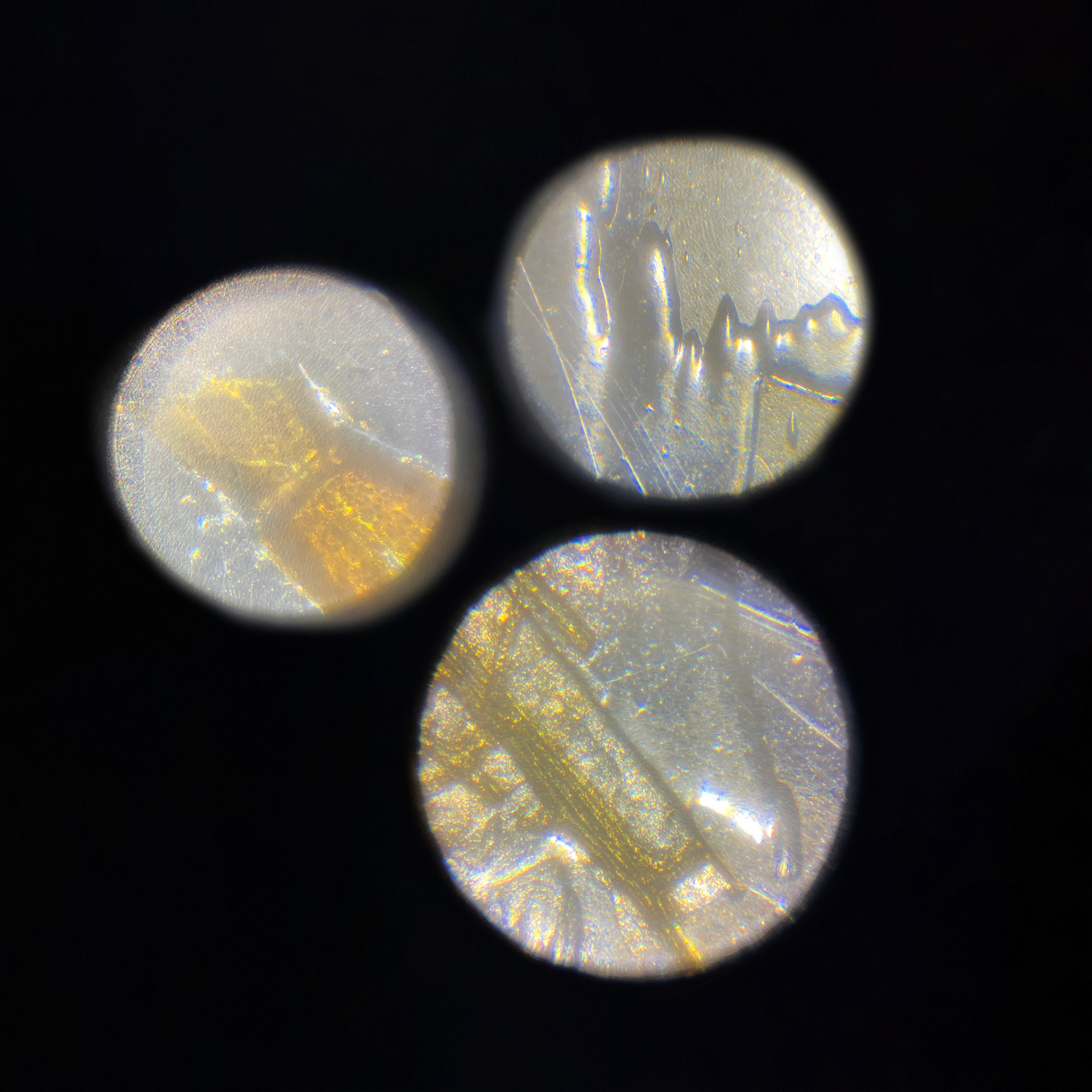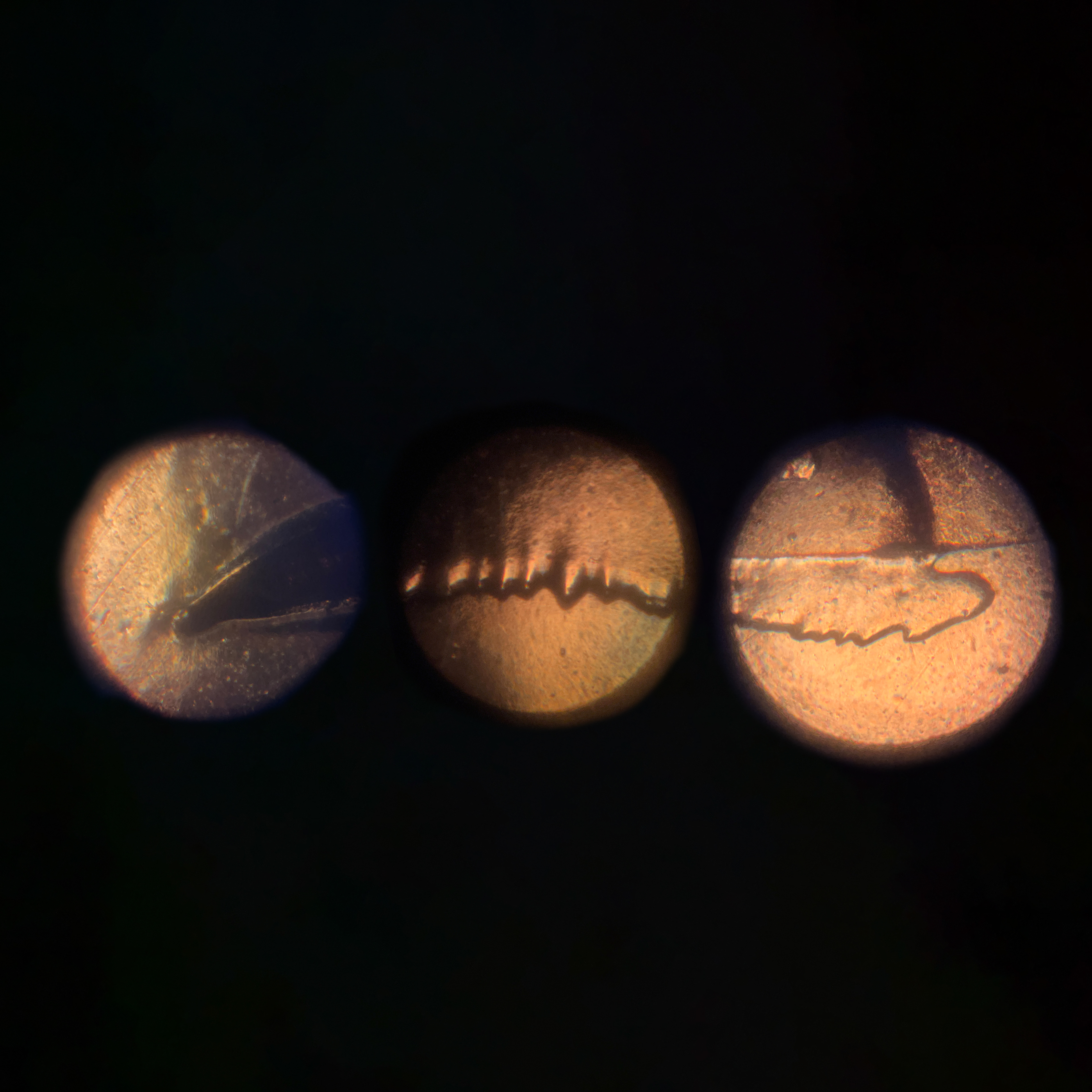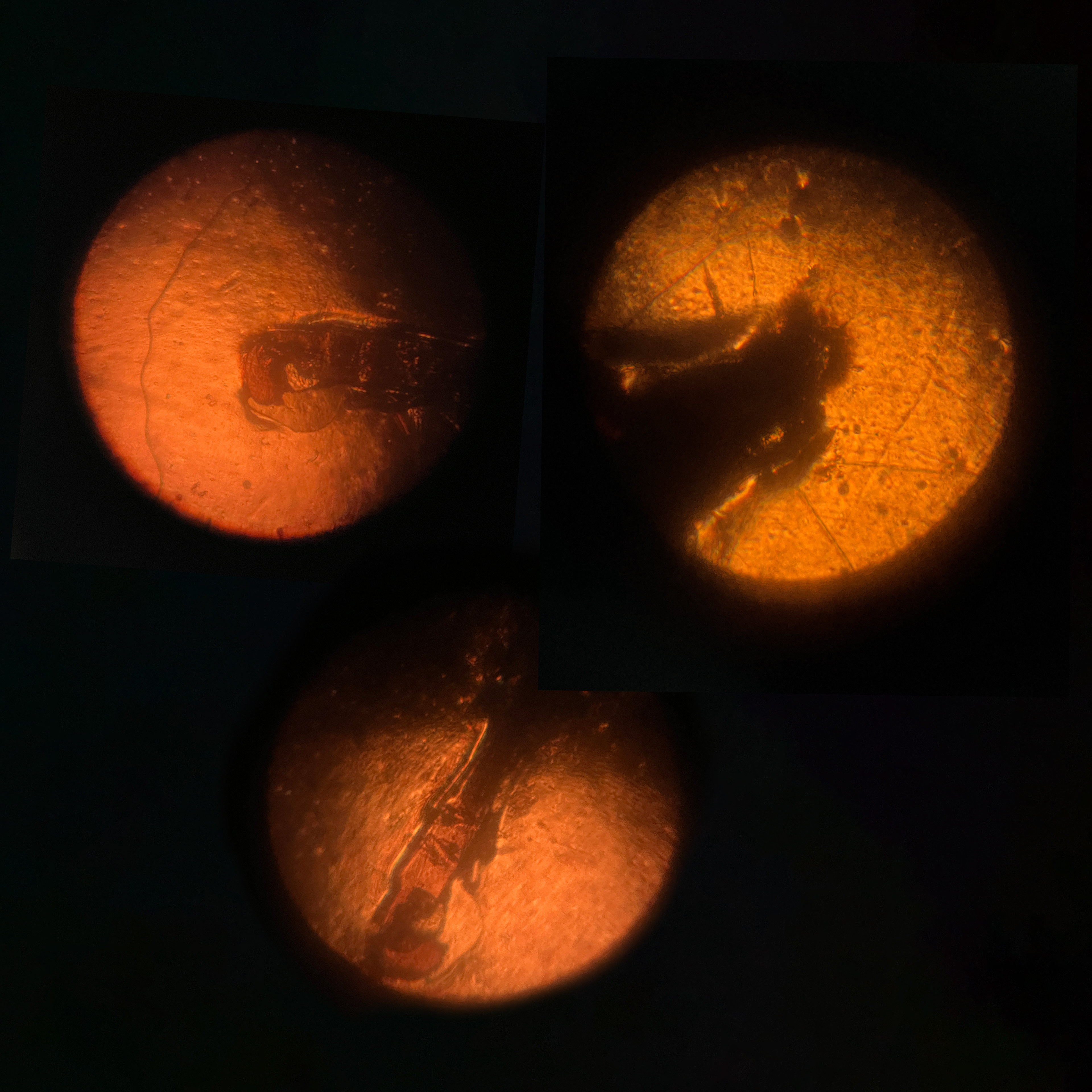Microscopic view of a grasshopper
• section through antenna, wing and abdomen •
I was drawn to the idea of exploring the invisible world within a small, seemingly ordinary body — the grasshopper. Through microscopic observation, I examined its internal structures in detail, and what I discovered far exceeded my expectations: complex forms, unusual textures, and shapes that resembled organic architecture.
As I studied these fragments from another world, I began to see them not just as biological components, but as markers of an inner landscape. This is how the idea of a map emerged — an artistic process of charting a hidden space that cannot be seen with the naked eye, yet builds its own visual logic.
This work is not about scientific representation, but about how close observation can become a form of visual translation — an imaginary map of what lies beyond immediate perception.


